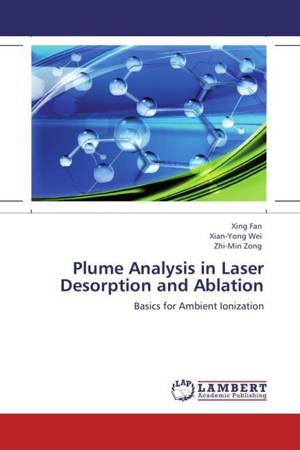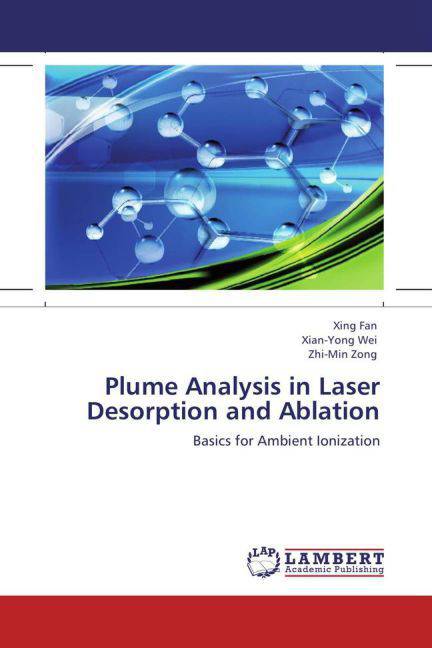
- Afhalen na 1 uur in een winkel met voorraad
- Gratis thuislevering in België vanaf € 30
- Ruim aanbod met 7 miljoen producten
- Afhalen na 1 uur in een winkel met voorraad
- Gratis thuislevering in België vanaf € 30
- Ruim aanbod met 7 miljoen producten
Zoeken
Plume Analysis in Laser Desorption and Ablation
Basics for Ambient Ionization
Xing Fan, Xian-Yong Wei, Zhi-Min Zong
Paperback | Engels
€ 58,45
+ 116 punten
Omschrijving
The fundamental physical processes of mid infrared laser ablation in the context of laser desorption mass spectrometry were investigated. Understanding the mechanisms of infrared laser desorption and ablation can lead to improvements in these techniques and expand their applications. Particles were generated from glycerol irradiated at atmospheric pressure using a tunable infrared laser at wavelengths between 2.6 and 3.8 m. The wavelength dependence of size distributions of ablated particles was measured. In addition to particle sizing, fast photography was used to study the dynamics of mid infrared laser desorption and ablation. The wavelength and energy of the infrared laser can be used to effectively tune the composition of the desorption plume. This ability to control the composition of the plume will be used in the development of IR laser ambient ionization mass spectrometry techniques such as atmospheric pressure matrix-assisted laser desorption ionization (AP-MALDI) and matrix-assisted laser desorption electrospray ionization (MALDESI) where the ability to control material removal is critical to efficient ionization.
Specificaties
Betrokkenen
- Auteur(s):
- Uitgeverij:
Inhoud
- Aantal bladzijden:
- 156
- Taal:
- Engels
Eigenschappen
- Productcode (EAN):
- 9783659160899
- Verschijningsdatum:
- 19/06/2012
- Uitvoering:
- Paperback
- Afmetingen:
- 150 mm x 220 mm
- Gewicht:
- 224 g

Alleen bij Standaard Boekhandel
+ 116 punten op je klantenkaart van Standaard Boekhandel
Beoordelingen
We publiceren alleen reviews die voldoen aan de voorwaarden voor reviews. Bekijk onze voorwaarden voor reviews.











